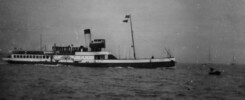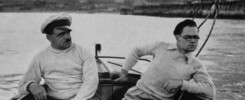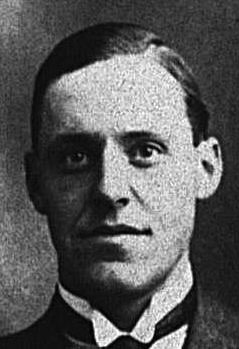
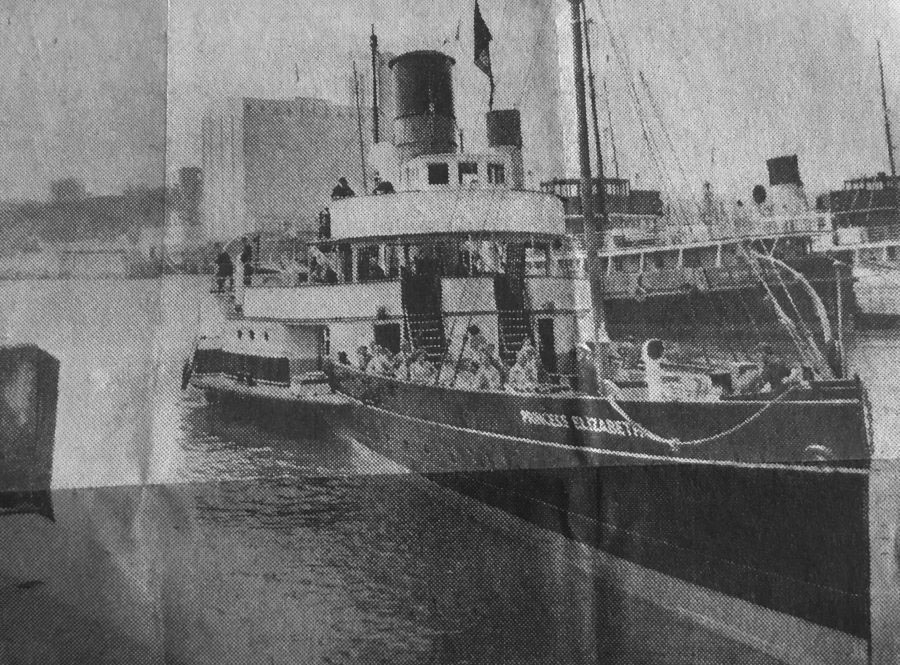
Captain John Hayward on the bridge of the Princess Elizabeth arriving at Millbay Plymouth for the first time at 2.50pm on Thursday 16th June 1960 on a day excursion which had left Torquay at 10am. She was slightly late back to Torquay that evening which delayed her departure for the evening cruise until 8.50pm. These late arrivals would become a feature of the Plymouth day trips sometimes leading to the cancellation of the evening cruise with the Lizzie sometimes not back until gone 9pm. It is a long old 45 nautical mile slog along the Devon coast between Plymouth and Torquay particularly if there is a bit of a sea running and you are punching the tide for a ship with a service speed of just 11 knots. In the background of the picture above are the Plymouth British Railways tenders Sir John Hawkins (1929 – 1962) and Sir Richard Grenville (1931 – 1968). The latter had a subsequent interlude in the 1960s sailing as La Duchess de Normandie between Jersey and St Malo as well as making regular calls at Cherbourg, Guernsey, Granville and Sark.
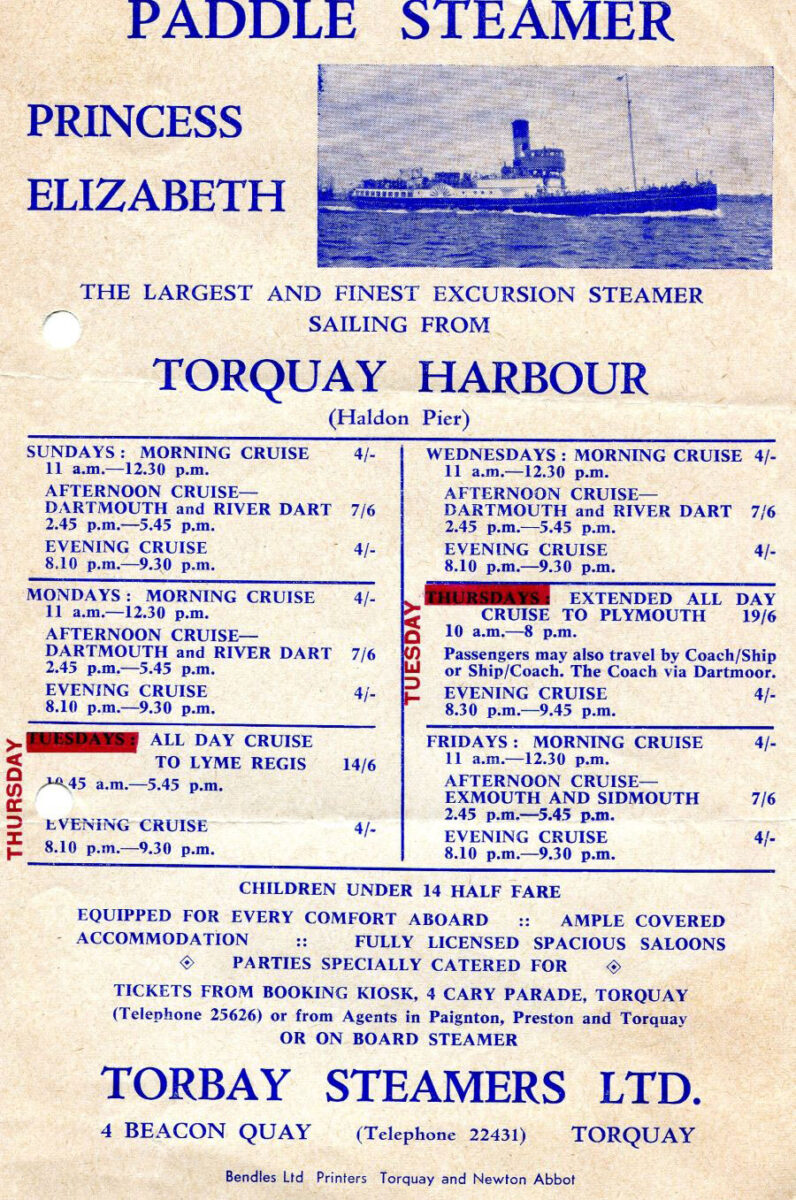
These Plymouth trips on Thursdays in 1960 were not a success attracting only a handful of passengers, far fewer than travelled on the day trips to Lyme Regis on Tuesdays. In an attempt to try to drive up the revenue they were swapped over from Thursdays to Tuesdays with the Lyme Regis runs from 2nd August as shown in red on the above steamer notice. However they did no better with this arrangement so Plymouth was dropped entirely from the schedule from 23rd August being replaced with morning, afternoon and evening cruises instead.
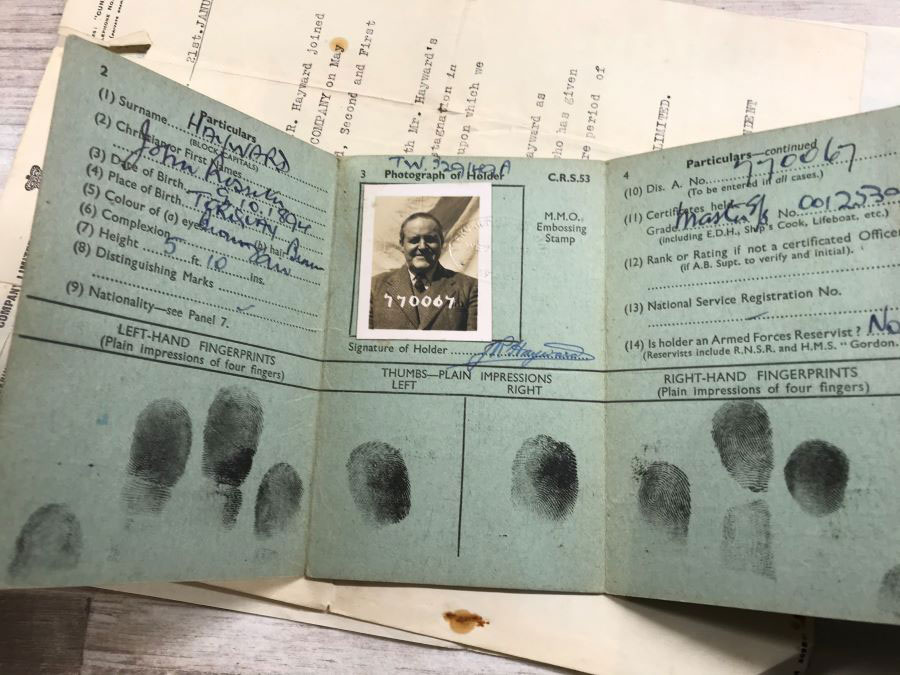
Cdr Rhodes had bought Princess Elizabeth from Red Funnel in Southampton late in 1959 and gave her a refit at Thornycroft’s yard at Northam in the spring of 1960. He needed a master for her first season at Torquay and chanced upon Captain John Hayward (pictured above) who lived locally and was about to retire as master of the Royal Fleet Auxiliary’s Barglow aged 65. Having grown up in Torbay Captain Hayward had known the paddle steamers Duke of Devonshire and Duchess of Devonshire sailing in the area as a boy so had first hand knowledge of the Devon excursion trade. His experience with rescue craft for the Royal Fleet Auxiliary had also given him an intimate understanding of ship handling often in difficult circumstances.
Captain Hayward went to sea in 1909 aged 15 with the letter confirming his apprenticeship, which had cost the family 30 guineas, stating that they should not worry about him as ‘most of our ships are within 18 months of a home port!” His first ship Ardencraig was sunk. He then worked on the Princepello which became the Feltria when Cunard took the company over and she was torpedoed and sunk in the First World War with the loss of many lives. He then moved onto the Vandalia which was also torpedoed. In each sinking his discharge book records the one liner “Ship sunk by enemy”.
After the war he became second officer of the ex German liner Imperator which became Cunard’s Berengaria and continued with that company, later as first officer, until made redundant in 1932 in the wake of the great depression when many shipping firms needed to make cuts in order to remain in business in what was by then a very much diminished market for travel by sea on ocean liners.
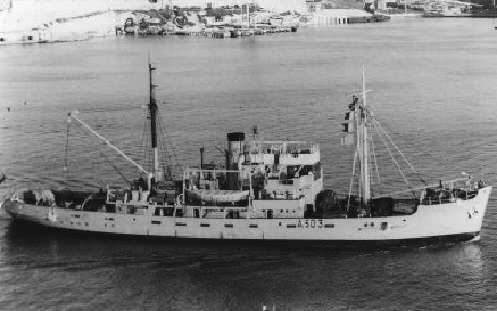
After that Captain Hayward worked on the anti-submarine boom defence at Turnchapel Plymouth as well as similar work at Scapa Flow, in Iceland and Sri Lanka. After the Second World War he became master with the Royal Fleet Auxiliary of various recovery vessels including Salvester, Salvictor, Dispenser, Envoy and Barnaby and was captain of the RFA Sea Salvor (pictured above) which recovered a large percentage of the Comet aeroplane Papa Yoke which crashed off Malta early in 1954.
He can be seen in the British Pathe News YouTube video (above) of the recovery and received an OBE in recognition of this work. He signed off as master of the Barglow in Rosyth retiring from the RFA on Saturday 9th April 1960 and signed on as master of the Princess Elizabeth two days later on Monday 11th at Southampton.
The Lizzie ran trials on Tuesday 26th April. She left Southampton for Torquay under his command on Thursday 5th May and her first sailing from Torquay was a trial run to the River Dart on Wednesday 11th May leaving at 1.50pm and back at 6.30pm.
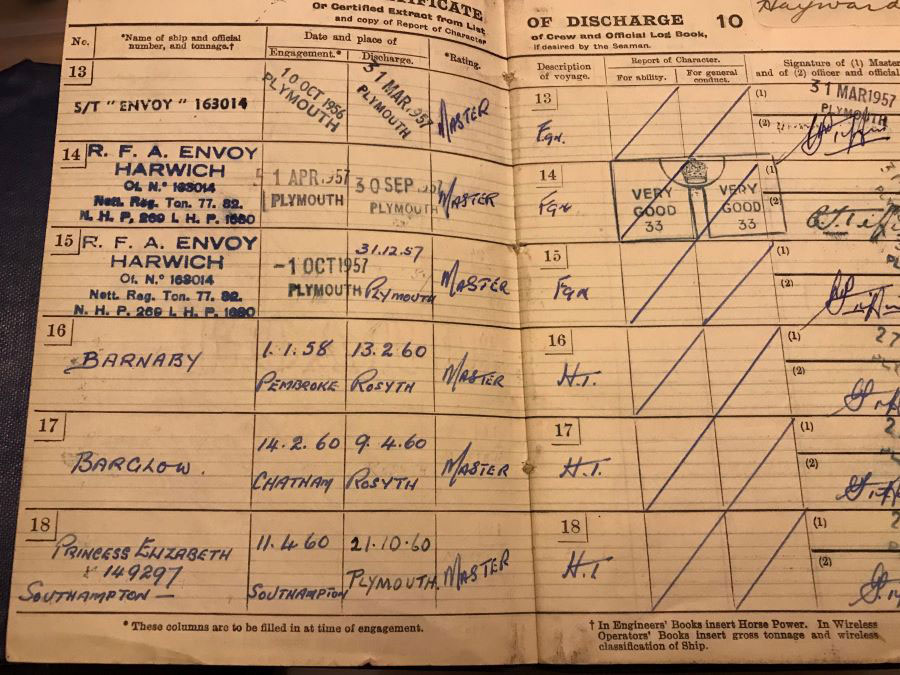
The 1960 season was not a success financially. Passenger numbers were often modest to low. There was aggressive competition from smaller and cheaper to run launches who tried to make every difficulty for the Lizzie including making complaints that she made too much smoke. And during the summer one of the British Railways Weymouth/Channel Island mail boats turned up once a week to vacuum up trippers looking for a longer day out, in her case to St Peter Port in Guernsey. And if you had been a potential passenger offered a choice between Plymouth or one of the Channel Islands as a destination for your day out which one would you have chosen? So money was tight.
The last trip of the season was an afternoon cruise from Torquay on Wednesday 21st September. Princess Elizabeth sailed for Philip’s yard at Dartmouth in the early afternoon of the following day and her boiler was blown down on Friday 23rd. Captain Hayward signed off one month later on 21st October 1960.
Was Cdr Rhodes expecting him to return after a winter break in 1961? Were they in touch during the winter? Or did they both have other ideas? Whatever the case by late April Cdr Rhodes was frantically looking around for another master and when he found that he could not source one locally in Torquay started doing the rounds of other paddle steamer captains including from the Cosens’s and Red Funnel fleets at Weymouth and Southampton to see if he could tempt any of them to jump ship and join him with the promise of better rewards. We know from his son Don’s recollections that Captain Jones, a master with Red Funnel who had commanded the Lizzie in the 1950s, was asked if he would like the job but he said no. It was not until late April that Cdr Rhodes eventually managed to recruit the entrepreneurially minded Captain Harry Defrates from the bridge of Consul shortly before the start of her season at Weymouth much to the irritation of Cosens’s General Manager Don Brookes.
We know from his grandson Derek Hayward and a letter from the time that Captain Hayward was still fit and eager to find other work despite being 66 so why he didn’t return to the Lizzie in 1961 remains a mystery. Maybe the conditions offered weren’t what he wanted. I think that it is fair to say that his previous bosses in the Government owned Grey Funnel Line were in a different class as employers than the rather mama/papa outfit that was Torbay Steamers led by Cdr Rhodes and his close associate Mrs “Money Bags” Berkeley-Bishop. I recall Captain Defrates telling my younger self that he sometimes wasn’t paid in 1961 being asked instead by the Governor, as he always called Cdr Rhodes, if he wouldn’t mind waiting for his emoluments until next week or maybe the week after as there were insufficient funds in the bank account. Did that also happen to Captain Hayward in 1960?
But by the spring of 1961 Captain Hayward had moved to Plymouth which would have meant a difficult commute or sleeping aboard Princess Elizabeth most nights in Torquay and the captain’s cabin was rather airless down on the lower deck in the forward saloon under what was almost certainly by then a leaky deck head. Maybe he also thought that having stepped so speedily into a new position after retiring from the RFA there would be other and better opportunities readily to hand more locally at Plymouth.
Whatever the case, after a lengthy and interesting career ranging from sailing as a senior officer on some of the largest liners in the world, including Cunarders, through to being master of salvage ships via anti-submarine work and including several vessels sunk from under him by enemy torpedoes, the Princess Elizabeth turned out to be Captain John R Hayward’s final command in the summer of 1960. He died in Plymouth in 1976 aged 82.
Kingswear Castle returned to service in 2023 after the first part of a major rebuild which is designed to set her up for the next 25 years running on the River Dart. The Paddle Steamer Kingswear Castle Trust is now fund raising for the second phase of the rebuild. You can read more about the rebuilds and how you can help if you can here.
John Megoran

